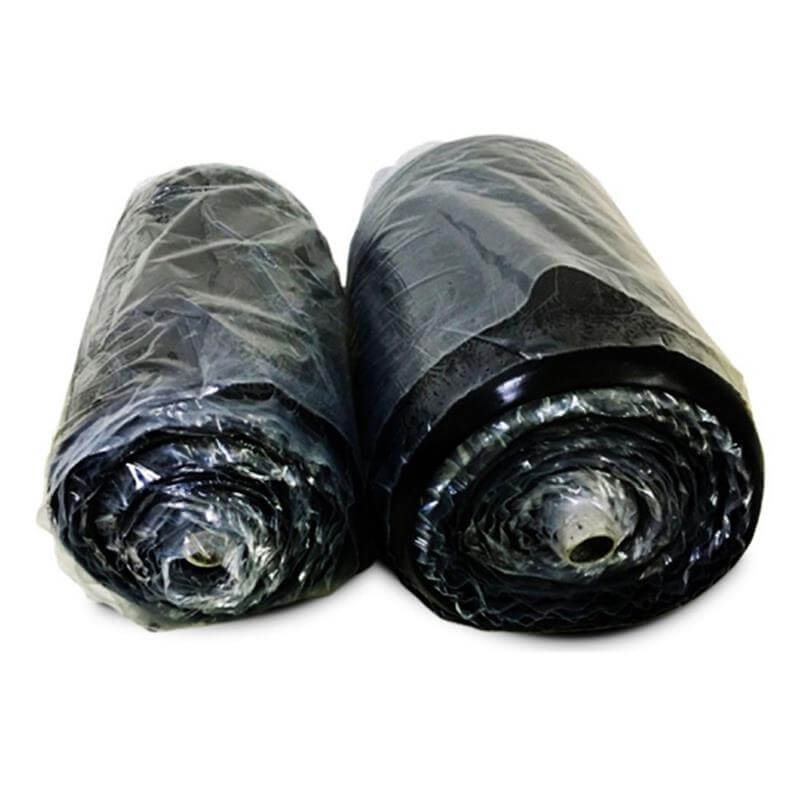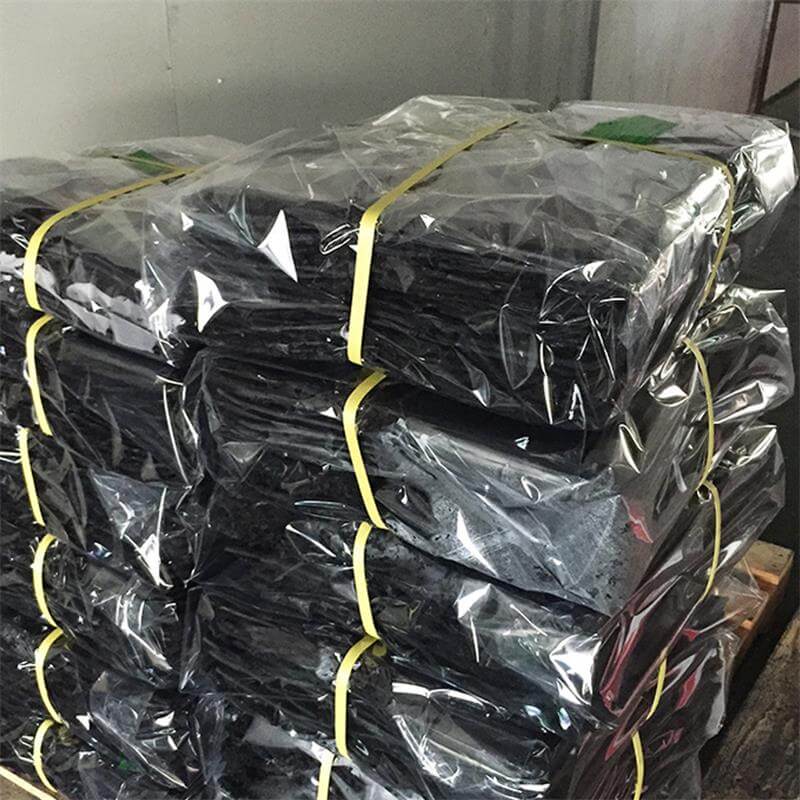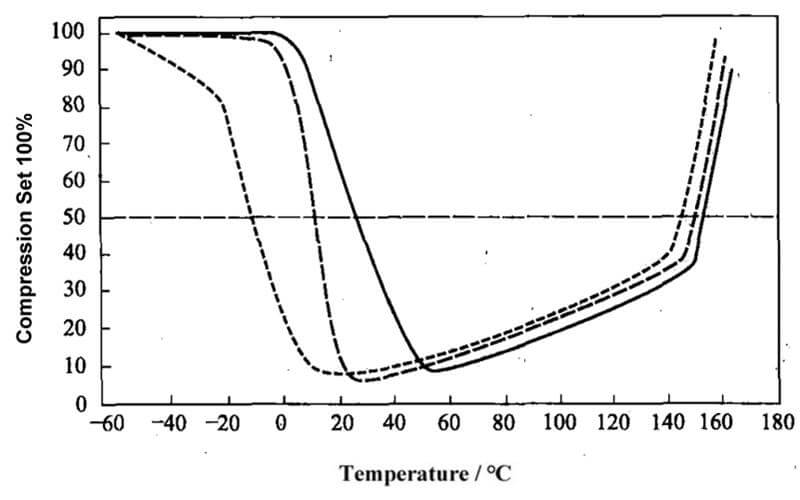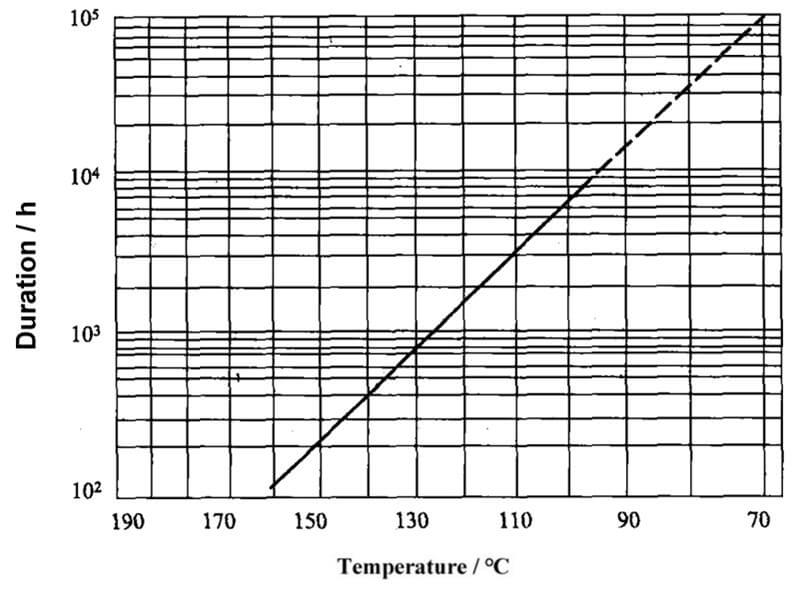Neoprene rubber (CR) is obtained by emulsion polymerization of chloroprene (2-chloro-1,3 butadiene), called polychloroprene rubber (referred to as chloroprene rubber), which is a polar, unsaturated, easy to crystallize rubber. It is a general-purpose synthetic rubber developed earlier and has a wide range of uses. The earliest CR put into the market was successfully developed by the American Dupont company in 1931. The product was named Neoprene, and the company is still the largest supplier of neoprene in the world.
Table of Contents
Types of Neoprene Rubber
Neoprene rubber can be divided into general-purpose types and special-purpose types according to its use. Among them, the general-purpose type is divided into sulfur-regulated type (G type for short) and non-sulfur-regulated type (W type for short or 54-1 type) according to the molecular weight regulator (terminator) added during the polymerization and mixed type. Special types can be divided into the adhesive type and other special-purpose types.
- Sulfur regulated type (G type)
In synthesizing this type of neoprene, sulfur is used as a molecular weight regulator, and thiuram is used as a stabilizer. The molecular weight is about 100,000, and the molecular weight distribution is wide. Because the structure is relatively regular, it can be used for general rubber products, so it is a general-purpose type. The trade names are GN, GNA, etc. The neoprene type is equivalent to the GNA type. - Non-sulfur regulated type (W type)
In the polymerization of chloroprene rubber, dodecyl mercaptan is used as a molecular weight regulator, so it is also called thiol-regulated chloroprene rubber. The molecular weight of this type of rubber is about 200,000, the molecular weight distribution is narrow, the molecular structure is more regular than the G type, and the content of the 12 structures is less. Trade names are W, WD, WRT, WHV, etc. The neoprene CR2322 type belongs to this category, which is equivalent to the W type. - Adhesive Neoprene
They are widely used as an adhesive. The main difference between this type of rubber and the general-purpose type is that the polymerization temperature is low (5~7℃), thus increasing the content of the trans 1,4 structure, making the molecular structure more regular, and high crystallinity, and high cohesion, so it has a high bond strength. - Other special-purpose neoprene
This refers to neoprene designed for oil resistance, cold resistance, or other special occasions. Such as chloroprene rubber, which is a copolymer of 2-chloro-1,3-butadiene and styrene. The introduction of styrene is to make the polymer obtain excellent crystallinity resistance to improve cold resistance (but not to improve vitrification temperature) for cold-resistant products. Another example is chloropropylene rubber, a non-sulfur-regulated copolymer of 2-chloro-1,3-butadiene and acrylonitrile. Acrylonitrile increases the polarity of the polymer, thereby improving oil resistance.
The difference between sulfur-conditioned and non-sulfur-conditioned neoprene rubber is as follows.
The molecular backbone of sulfur-regulated chloroprene rubber contains polysulfide bonds (80~110), because the bond energy of polysulfide bonds is much lower than the bond energy of C-C bonds, under certain conditions (such as the effect of light and heat, and oxygen ) it is easy to break and generate new active groups, resulting in disproportionation, cross-linking and loss of elasticity, so the storage stability is poor. However, when this type of rubber is masticated, it is easy to break at the polysulfide bond to form a mercapto (-SH) compound, which reduces the molecular weight, so it has a certain mastication effect. This kind of rubber has good physical and mechanical properties, especially resilience, tear strength, and flexural crack resistance, which are better than the W type. It has a fast vulcanization rate and can be vulcanized with metal oxide. It has a low elastic recovery during processing and molding and the adhesion is good, but it is easy to scorch and has the phenomenon of sticking to the roll.
The non-sulfur-regulated neoprene molecular backbone does not contain polysulfide chains, so it has better storage stability. Compared with the G type, the advantages of this type of rubber are that it is not easy to scorch during processing, not easy to stick to the roller, easy to master the operating conditions, and the vulcanizate has a good heat resistance and low compression deformation. However, the crystallinity is large, the viscosity during molding is poor, and the vulcanization rate is slow.
Properties of HNBR Rubber
(1) Physical Properties of Neoprene Rubber
Neoprene is a light yellow or even brown elastomer with a relatively high density of 1.23~1.25g/cm3. It is soluble in toluene, chlorinated hydrocarbons, butanone, and other solvents. It is soluble in some esters medium (such as ethyl acetate), but less soluble. It is not soluble in aliphatic hydrocarbons, ethanol, and acetone. The crushing point is -35~-50℃, the softening point is about 80℃, and it decomposes at 230~260℃.
(2) Physical and Mechanical Properties of Neoprene Rubber
Neoprene rubber has good comprehensive physical and mechanical properties and also has the characteristics of heat resistance, ozone resistance, weathering resistance, flame resistance, oil resistance, and good adhesion. It is called multifunctional rubber.
- Because neoprene has strong crystallinity, high self-reinforcing property, and large intermolecular force, neoprene has mechanical strength similar to natural rubber. The tensile strength and elongation at break of its pure rubber vulcanizate are even higher than those of natural rubber, while the tensile strength and elongation at break of carbon black reinforced vulcanizate are close to those of natural rubber. Other physical and mechanical properties are also very good, such as its resilience and tear resistance are second only to natural rubber and better than general synthetic rubber, and its wear resistance is close to natural rubber.
- Because of the strong structural stability of neoprene, it has good heat resistance, ozone resistance, and weathering resistance. Its heat resistance is comparable to that of nitrile rubber, and it can be used for a short period of time at 150°C and four months at 90~110°C. Ozone resistance and weathering resistance are second only to ethylene-propylene rubber and butyl rubber and are much better than other general-purpose rubbers. In addition, neoprene has better chemical resistance and water resistance than natural rubber and styrene-butadiene rubber but has poor resistance to oxidative substances.
- Due to the regularity and polarity of the molecular structure of neoprene rubber, it is easy to crystallize at low temperatures, and the cohesive force is large, which limits the thermal movement of the molecules. Therefore, the cold resistance is not good. The glass transition temperature of neoprene rubber is -40 °C, and the low-temperature use range is generally not more than -30 °C.
- Due to the tight structure of neoprene rubber, it has good air tightness and is second only to butyl rubber among general-purpose rubbers.
- Since neoprene rubber emits hydrogen chloride when it is burned, it has a flame retardant effect. Therefore, although it can burn in case of fire, it will extinguish itself when the fire source is cut off. The flame retardancy of neoprene is the best among general-purpose rubbers.
- Due to the regularity and polarity of the molecular structure of neoprene rubber, it is easy to crystallize at low temperatures, and the cohesive force is large, which limits the thermal movement of the molecules. Therefore, the cold resistance is not good, the glass transition temperature of neoprene rubber is -40 °C, and the low-temperature use range is generally not more than -30 °C.
- Because the chloroprene rubber molecule contains polar chlorine atoms, the insulation is poor, and the volume resistivity is 1010~1012Ω·cm, which is only suitable for lower voltages within 600V.
- Neoprene has good adhesion, so it is widely used as an adhesive.
(3) Process Performance of Neoprene Rubber
- Due to the existence of polar chlorine atoms, the neoprene rubber is highly sensitive to temperature during processing. When the plasticizing and mixing temperature exceeds the elastic state temperature range (the elastic state temperature of G type is from room temperature to 71℃, W type from normal to 79°C, natural rubber from normal to 100°C, neoprene viscous fluid temperature is above 93°C, and natural rubber viscous fluid temperature is above about 135°C), which will cause sticking roller phenomenon, causing operation difficulty, especially G-type neoprene.
- The mixing temperature of neoprene rubber should be lower than that of natural rubber, otherwise, the shear force is not enough, and the compounding agent cannot be dispersed. However, the neoprene rubber compound has high heat generation, so it should be careful on cooling.
- Due to the high crystallization tendency of neoprene, after long-term storage, the plasticity will decrease, the hardness will increase, the scorch time will be shortened, and the vulcanization rate will be accelerated which results in a decrease in adhesion and difficulty in molding, so the storage stability of neoprene rubber is poor, especially W-type neoprene.
- During processing, it is manifested as poor fluidity, poor adhesion, rough and easy scorch of the extruded rubber billet, and in severe cases, the rubber material will be scrapped.
Compression Set of Neoprene Rubber
The hardness of neoprene rubber can range from 30 to 90. The compression set is an important criterion for each special purpose rubber. The size of the compression set depends on the temperature. At a certain temperature point, it has the lowest value. When the temperature increases or decreases, the compression set will increase sharply. The compression set results for the three types of neoprene are shown in the following figure.
Figure 1 Relationship between compression set and temperature of neoprene vulcanizate (test time 7d)
—— Baypren 320; —— Baypren 210; —— Baypren 110
The heat resistance of neoprene rubber is much better than natural rubber, but inferior to ethylene-vinyl acetate (EVM), hydrogenated nitrile, EPDM, and IIR. According to the VDE (Verband Deutscher Elektrotechniker) method, the upper-temperature limit for long-term continuous operation is 80°C. With specific coordination, it can work at 120°C for a short time.
Test method: VDE 0304/2/7.59, the duration is terminated when the elongation is less than 100%
Figure 2 Arrhenius curve of Baypren 210 vulcanizate heat-resistant air aging
Application of Neoprene Rubber
Because neoprene rubber not only has special properties such as heat resistance, aging resistance, oil resistance, and corrosion resistance but also has good comprehensive physical and mechanical properties, it is a kind of rubber material that can meet high-performance requirements and has a wide range of uses.
It can be used to manufacture tire sidewalls, heat-resistant conveyor belts, oil and chemical resistant hoses, container liners, o-rings, gaskets, rubber rollers, rubber sheets, automotive and tractor accessories, wire and cable coverings, door and window sealants, rubber dams, road caulking materials, building sealing strips, building waterproof sheets, some flame retardant rubber products, and adhesives, etc.
Neoprene has good adhesion and is widely used as an adhesive. Neoprene-based adhesives account for 80% of synthetic rubber-based adhesives. It is characterized by high bonding strength, wide application range, aging resistance, oil resistance, chemical corrosion resistance, elasticity, easy use, and generally no need for vulcanization.
Neoprene can be used in combination with natural rubber to improve processability, increase bond strength, and improve flex and tear resistance. The combined use of chloroprene rubber and styrene-butadiene rubber can reduce costs and improve low-temperature resistance, but the ozone resistance, oil resistance, and weather resistance will decrease. The combination of neoprene rubber and nitrile rubber can improve oil resistance, improve roll stickiness, and facilitate calendering and extrusion molding. The combination of neoprene rubber and butadiene rubber can improve the sticking performance of neoprene rubber, improve the process performance of calendering, and at the same time, elasticity, abrasion resistance, and compression heat generation can be improved, but oil resistance, ozone resistance, and strength reduce. The combination of neoprene and ethylene-propylene rubber can further improve the ozone resistance of neoprene and improve the heat resistance at the same time.





